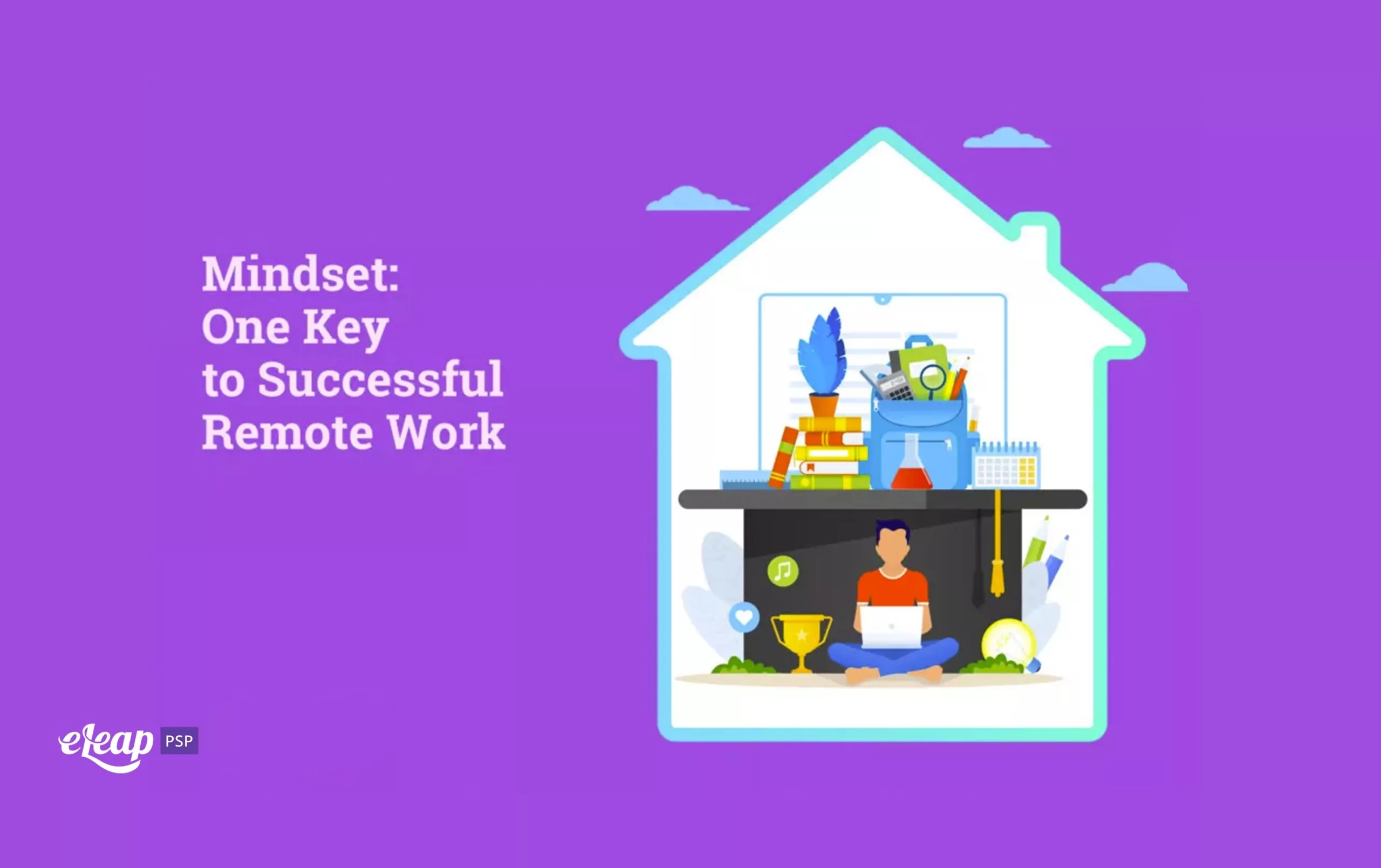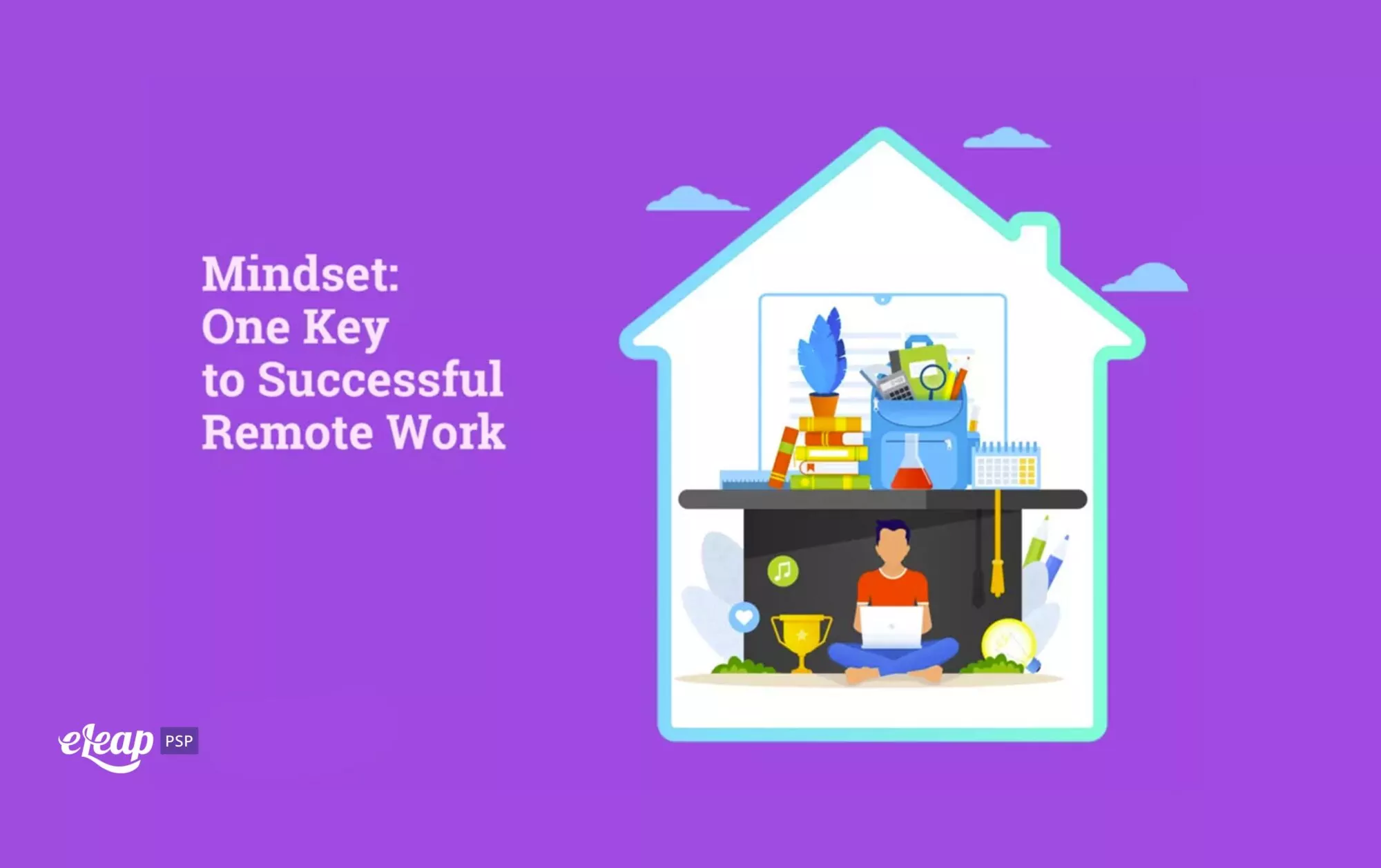Mindset: One Key to Successful Remote Work

Remote work has become part and parcel of daily life for most of us. And yet many still struggle to make a go of it. They haven’t embraced it in the same way that the rest of us have. What makes for successful remote work and what doesn’t?
The challenge here may have nothing to do with the actual situation – being required to manage teams from a distance, via technology rather than in person. Instead, it is often a question of mindset. The right mindset can be essential to successful remote work, team management, and effective leadership during the pandemic.
In this post, we’ll explore several tips to help ensure you’re able to create the right mindset.

Focus on the Infrastructure Necessary
It’s no secret that successful remote working requires the right infrastructure in terms of technology and tool. From Zoom to email, chat options to Trello and Slack, you need to make sure that the infrastructure is in place and that it stays in place if and when the remote situation ends. What we’re talking about here is committing to a remote-ready mode of operations even if things eventually go back to normal and we’re all working from our offices once more.
Why? Simply put, it’s all about flexibility and building in the ability to shift from in-person interaction to remote work in the blink of an eye, without missing a beat. You’ll find a few other crucial benefits with a remote-first mindset, too, including the following:
- You can hire the right people at the right time regardless of geographic location.
- You may be able to reduce the cost of new hires in remote locations compared to your HQ’s location.
- You gain a significant amount of resilience should you be forced to go remote again.
Help Employees Interact the Same Way
Another key element of building the right mindset is to focus on ensuring your teams can interact and connect in the same (or very similar) ways to how they would if they were all working in the same place. How would your employees connect in the office? How can you recreate that in a remote-work scenario? Why bother? Let’s address the last one first.
It’s all about company culture. Without that human-to-human connection, culture takes a hit. People start feeling disconnected, disassociated, distant, and dissatisfied.
With the right tools, though, you can maintain your existing culture, or even improve on it. Culture isn’t an accident. It’s built intentionally. It’s designed from the ground up. It requires effort to maintain. That should be part of the foundation of your mindset here.
Here are a few examples of how people interact with one another in a regular office environment:
- Water cooler talk
- Dropping by one another’s offices
- Talking on breaks
- Conversing in the hall
- Lunch breaks
- Whiteboard sessions
- Before and after meetings
This isn’t a comprehensive list, but it serves the purpose. To maintain and support a positive culture, you need to find ways to recreate those touchpoints. Remember that humans are social animals, and everything we do has some element of social connection to it.
To support that, you need high-quality video conferencing technology in place. You need text tools that allow people to send quick thoughts to one another. You need file-sharing platforms not just for spreadsheets and Word docs, but also for sharing memes and the like.Most of all, you need to put thought into the rhythm of your communications. Try to emulate the same cadence as the office whenever possible. This will help your teams feel connected and limit the sense of disconnect that can occur with remote work situations.
Are You Present as a Leader?
In the office, your presence as a leader is pretty definite. Your employees know when you’re in the office and when you’re out. Simply seeing you walk down the hall can instill a sense of stability, solidity, and confidence. In a remote work situation, that may not be the case.
Face-to-face leadership opportunities are less frequent with remote working. That’s an important distinction and one that you need to plan to handle. Ideally, you’ll check in with individual team members regularly and get some face time, even though you’re not in the same physical office.
How should you do that? Ideally, you’ll go with a combination of methods, including team or company-wide emails, video meetings, Slack communications, and more. The tools you use should be based on the infrastructure you set up previously (see the previous tip above).
The takeaway here is that you need to plan to be present. You need to plan for more frequent communication and be more intentionally present. Without that intentional planning, your presence can wane and that will harm the team.
Skip the Micromanaging
One of the most common fears about remote work is that team members will ditch their responsibilities and, instead, spend their days watching TV or playing games. They’ll kick back and pretend to do their work while earning money for not doing much of anything. This fear leads to micromanaging and, ultimately, team demoralization.
Most employees want to do a good job, even if they’re at home. Some might struggle to nail down a schedule at first, and interruptions during the workday will be the rule rather than the exception. However, very few of your team members are going to be slacking off instead of working.
Resist the urge to micromanage. It destroys trust and the relationships you’ve tried so hard to build. Instead, trust that your team wants to do a great job. Make sure they have the tools necessary, communicate with them regularly, and make sure that everyone feels a sense of accountability.
The Right Mindset Supports Success
If you’re able to develop a remote-first mindset, you’ll find that you struggle less. You’ll be more trusting and open, and your teams will be freer to be themselves while pursuing their duties to the best of their individual capabilities. It’s about finding success in a world turned on its ear and making sure that you’re ready for a repeat of this scenario even if COVID-19’s impact eventually wanes.